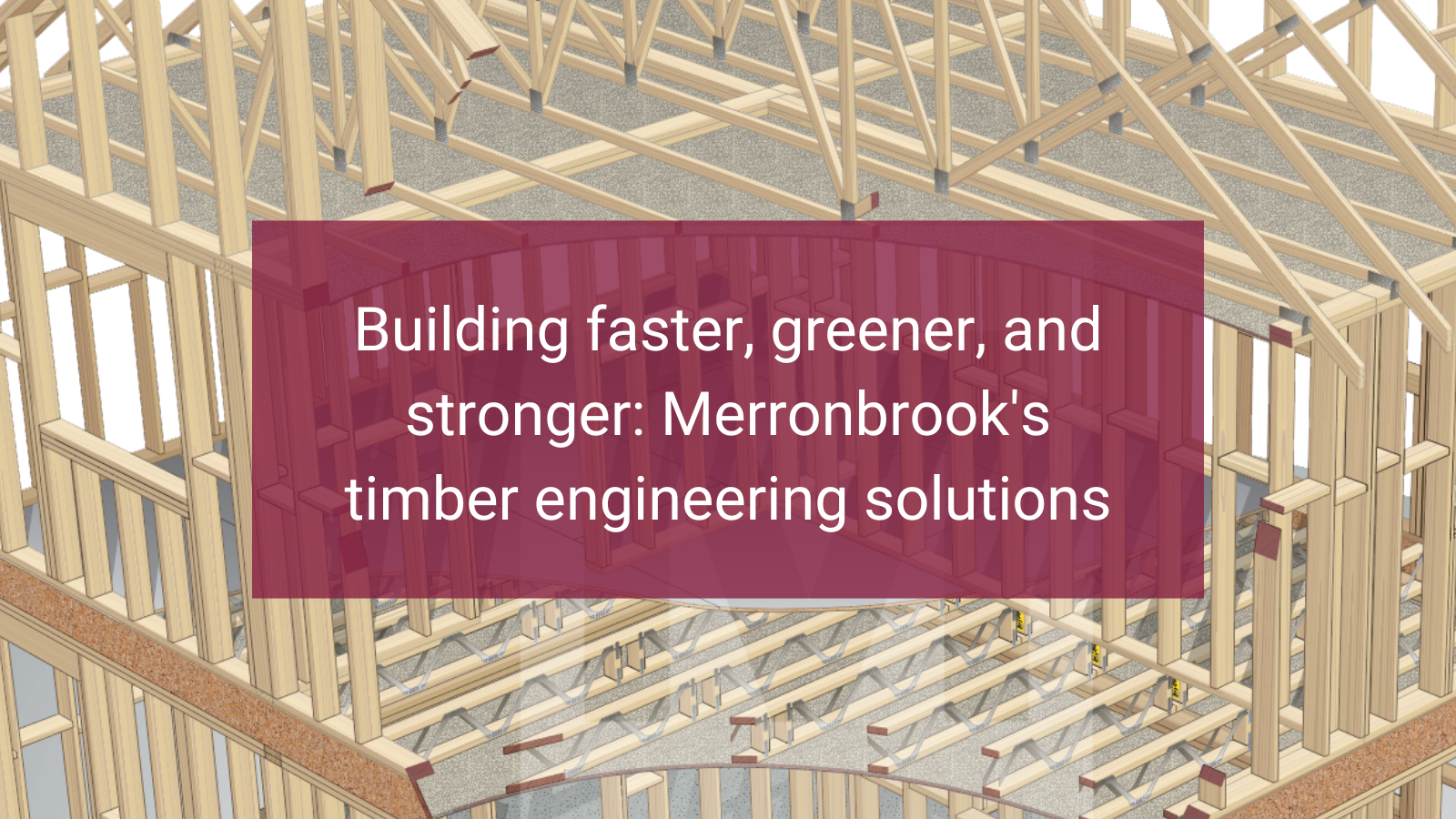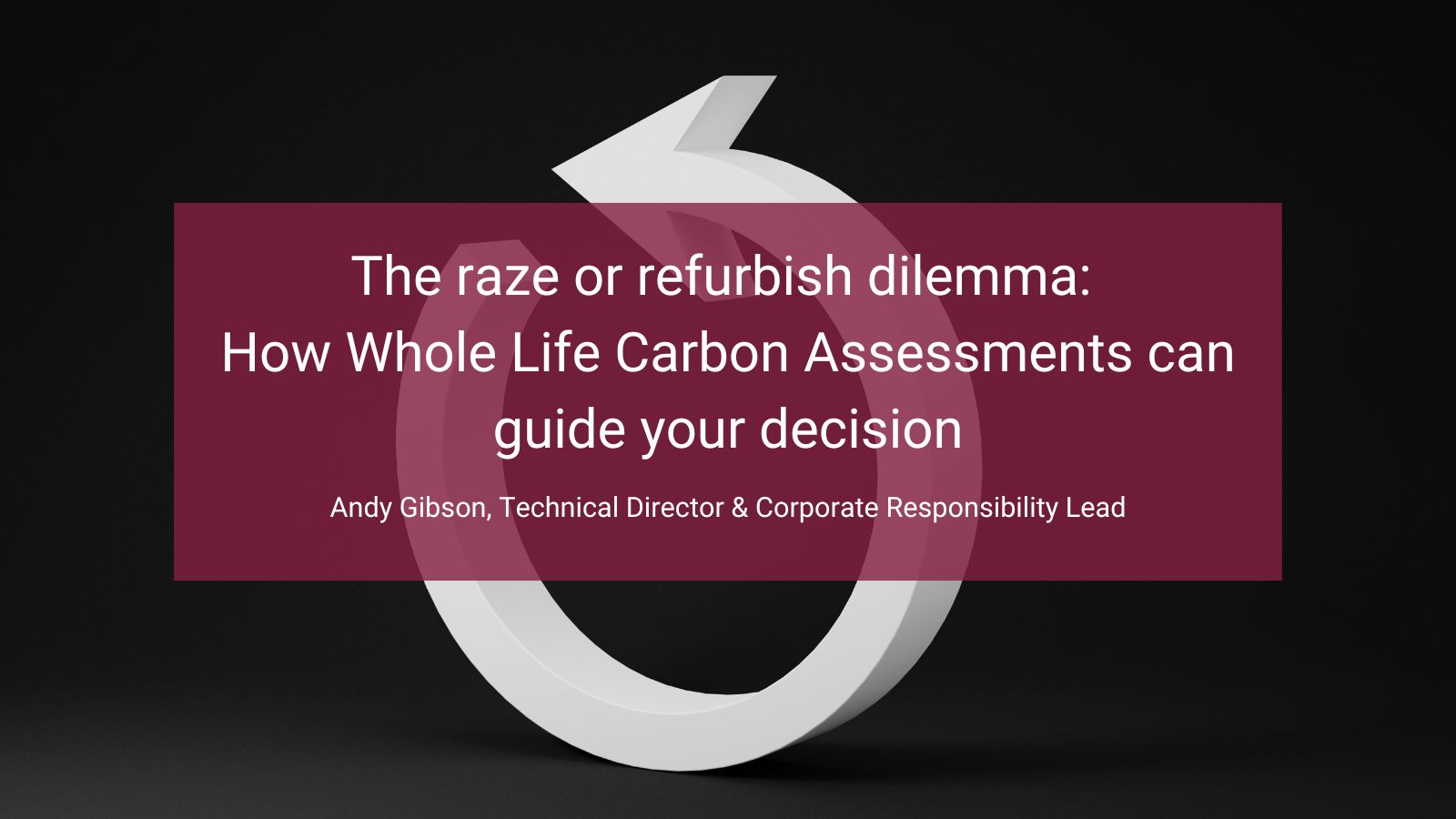Seeing the wood for the trees – why the right timber is the most sustainable building material

Claims to sustainability come thick and fast these days, but which are convincing and which are not? Here, we offer some evidence-based thoughts on timber and whether it truly is the material of choice for those seeking a sustainable approach to construction.
Why the sustainability of the built environment matters
Buildings are responsible for 40% of all carbon emissions, worldwide, so nothing matters more in the drive to reduce our collective carbon footprint. Note that this figure includes both construction and subsequent building operations, so it’s important to consider how your building will function once complete, as well as how it’s constructed.
The traditional option
As we discussed on our blog recently, timber-framed construction is growing fast, but in the UK, it is yet to overtake the traditional “brick and block” approach, where structures are made from a mixture of brickwork and concrete blocks. Concrete is manufactured by adding sand and gravel to cement, and cement is made by using fossil fuels to heat limestone and clay to 1,400 °C in a kiln. “If the cement industry were a country, it would be the third largest emitter in the world – behind China and the US,” says the BBC.
Brick kilns can be kept to “merely” 1,000 °C, but the emissions problem can’t be avoided with these materials. Other options have even worse ramifications, with steelmaking involving firing iron ore and carbon from coal to 1,700 degrees.
The growing choice
The World Economic Forum urged a switch to timber, pointing out that “while traditional buildings made from concrete and steel are expected to produce around 2,000 tonnes of CO2 emissions, an equivalent timber building can match this in carbon storage.” Trees, in other words, absorb carbon from the air around them, and then hold it, actually offsetting carbon-intensive human activities. Among the other points made in the same piece:
• Timber is light and prefabricated offsite, meaning the cost in money and emissions is kept low, both for construction and transport
• Timber-based structures “require less heating in winter and less cooling in summer, making them more energy and cost-efficient to run”
• Modern timber can be treated to become fireproof and resistant to floods, termites and even earthquakes, so it is as durable as any other option.
Is all timber the same?
The headline of the World Economic Forum piece in fact commended “sustainable timber”, with that adjective inserted repeatedly throughout. Not all timber is the same. Timber is potentially sustainable, because you can plant new trees to replace those you fell, but not all forestry is conducted like that. For timber products to be truly sustainable, the way they are transported and processed also has to be assessed.
How to measure the sustainability of timber
Globally, there are two main certification programmes for timber:
• Programme for the Endorsement of Forest Certification (PEFC)
• Forest Stewardship Council (FSC)
The FSC was developed initially to assess tropical forestry, particularly in developing countries. It has a strong focus on ensuring that traditional and civil rights are protected during logging, but makes no attempt to assess the overall supply chain of timber items, only the forestry. PEFC was created specifically because FSC was seen as unsuited to European production, and also to warrant produced timber products, not just the felling operations.
All timber used by Merronbrook, whether for our timber frames, roof trusses or floor joists, is independently certified as PEFC compliant. We’re proud to say that a proportion of it is from sustainable softwood forests in Scotland To avoid the carbon associated with importing, we occasionally buy ‘home-grown’ timber from sustainable forests in Wales and Scotland, but mostly it is from Sweden, a country with arguably the strongest legal framework for sustainable forestry in the world.
Leadership
As part of our ongoing commitment to taking a leadership position on matters of sustainability, our own Technical Director, Andy Gibson, is currently undertaking a research project looking into the viability of timber as a truly sustainable material, including assessing the use of full Life Cycle Analyses of embodied carbon, establishing likelihoods of second- & third-life uses, creating standards and pathways for re-use of timber in existing buildings, and whether Carbon Credits offer a sound method for justifying the use of more timber now, as a decarbonisation strategy.
Where do we go from here?
The UK Government’s 25-year environmental plan recommends increased use of timber. It also has strict new rules which will require a degree of energy efficiency in building operations that will be hard to meet with traditional materials. Whether your focus is on reducing energy bills or meeting obligations or something a little more ambitious like saving the world, sustainable timber can help. If you’re convinced, or if you need more convincing, please contact us on 01252 844747 or at webenquiries@merronbrook.co.uk.


